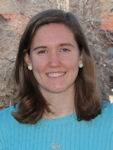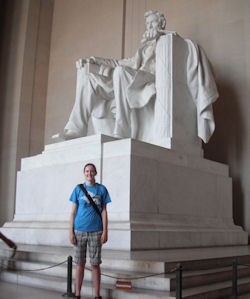CSPO Alumni
For a list of CSPO alumni, visit the CSPO People page.

Feature Story from June 2014 issue
Our Newest Alumni
Congratulations to our Newest CSPO Graduates!

(L to R) Shannon Conley, Amanda Dickson, Jeffrey Jennings, Christine Luk, Carolyn Mattick, and Caitlin Troyer
Shannon Conley – PhD in Political Science
Starting fall 2014, Shannon will be an Assistant Professor in the Department of Integrated Science and Technology at James Madison University. Her dissertation was titled “Negotiating Socio-Technical Contracts: Anticipatory Governance and Reproductive Technologies.”
Amanda Dickson – MSTech in Global Technology and Development
Amanda successfully completed the required comprehensive exams for her master’s degree and is excited to take her new found knowledge out into the work force. She worked as a teaching assistant at ASU and would enjoy returning to the classroom as an instructor.
Jeffrey Jennings – Master of Science and Technology Policy
Jeffrey successfully completed an internship at Dell, Inc. and an Applied Project titled “A comparison of remediation efficacy at the Motorola 52nd Street and Indian Bend Wash Superfund Sites: Investigating how disparate socio-economic conditions affected home values.”
Christine Luk – PhD in Human and Social Dimensions of Science and Technology
Christine will remain at ASU this fall as an instructor after completing her dissertation “Biophysics, Rockets, and the State in Twentieth-Century China: The Making of a Scientific Discipline.”
Carolyn Mattick – PhD in Civil, Environmental and Sustainable Engineering
Carolyn completed a dissertation titled “An Emerging Technology Assessment of Factory-Grown Food” investigating the environmental, economic, and social implications of cultured, or in vitro, meat – edible muscle and fat cells grown from animal stem cells in a laboratory or factory. After graduation, she plans to continue her research into the implications of emerging technologies within the context of sustainable engineering or technology policy.
Caitlin Troyer – MS in Biology and Society; Certificate in Responsible Innovation in Science, Engineering and Society
After completing her thesis on “Assessing the Impact of Endangered Species Act Recovery Planning Guidelines on Managing Threats for Listed Species” Caiti will be attending Stanford Law School this fall. There she hopes to put the skills she learned through CSPO and her other graduate courses to good use. Her current plans are to be involved in science policy or environmental law.
Feature Story from February 2014 issue
Michele Garfinkel named AAAS Fellow
The American Association for the Advancement of Science (AAAS) announced in November 2013 that Michele Garfinkel (former Research Fellow, CSPO-DC) has been named a Fellow in the Section on Societal Impacts of Science and Engineering for her work in molecular biology, synthetic biology and human genomics. Michele is the Manager of the Science Policy Programme for the European Molecular Biology Organization (EMBO) in Heidelberg, Germany.

Feature story from October 2013 issue
Science Outside the Lab: Insights from Washington
By Joe Donohoe
I recently returned from Science Outside the Lab, a two-week science policy immersion program in Washington D.C. offered by the Consortium for Science, Policy, and Outcomes. The program had a little bit of everything: career advice, budget analysis, communication tips, perspectives from non-profits, for profits (very large profits), meager profits (the media), and some great information on behind-the-scenes science policy. Here’s a summary of the highlights, in no particular order.
Communicating to non-scientists is hard. We met with a communications consultant and simulated the “What do you do?” question and the five minute conversation that often follows. I carried on about big data, informatics, and cancer, and soon confused myself. We switched roles, and the consultant made my research sound Nobel Prize-worthy. The trick? He turned my jargon into a story.
The State of the Union address matters. One senator laughs, one scowls. The Supreme Court stares blankly. A group of 20 stands and claps, another 20 slouch and cross their arms. I thought the State of the Union was a political charade. It’s not. This year, the President talked about ways to eradicate extreme poverty in the next 20 years. USAID staff cheered from their living rooms. Their sentence made it in the speech. They spent the previous weeks crafting proposals. They spent the following weeks designing plans to implement them. All because of the State of the Union.
The Media matters. On Wednesday evening, June 5th, The Guardian newspaper published the court order that allowed the National Security Agency to collect call logs from Verizon. On Thursday morning, by brilliant luck, we were scheduled to meet the Senior Director for Cybersecurity on the National Security Staff at the White House. His closing message was something like this: I hope you appreciate this meeting because my world just changed for the next few days. But, if you’re worried about your privacy don’t despair…
The National Security Staff has a Director for Privacy and Civil Liberties! We met her. She’s real.
The federal budget is complicated. Nuclear physics, chemistry, applied math, epidemiology, molecular biology… these are a sampling of the participants’ backgrounds. None of us were a match for the federal budget. A former Office of Management and Budget (OMB) analyst walked us through the process, from the initial presidential budget guidance to the final appropriations bills, with great anecdotes thrown in. For instance, one federal agency director was caught in a scandal. Come budget season, the administration submitted its requested funding level for the agency. The director immediately returned the request right at the guidance level without any haggling, a rare event. Their job was secure.
There’s no ‘Grand Plan’ to fund science. Many have seen the pie chart of the R&D budget. Defense spending is near half. NIH is almost another quarter. Department of Energy and NASA are slightly over 5%. NSF is slightly under 5%. Despite raising many interesting questions, this chart is imaginary, created after the fact. At no point in the budget process is a big science fund divvied up between the agencies.
Want to be a partner at a law firm without being a lawyer? Move to Washington D.C. Work for the House or Senate science committee. Quit and join a firm that lobbies for industry and academic research. Speaking of lobbyists…
Lobbying firms make a lot of money. Seems obvious, but boardrooms with wall-to-wall views of the Capital and company labeled water bottles drive the point home.
Science journalism is figuring out what not to write. Science is conducted. It’s published in journals. Universities, journals, and funding agencies create flattering press releases. Those releases are aggregated at eurekalert.org. Journalists sift through them and write an interesting story. There were 144 releases on Wednesday, July 10th, 2013.
Really smart people work in government. I have pet issues and get frustrated when they don’t go my way. How could Congress not give wilderness designation to millions of proposed acres in the northern Rocky Mountains? Cynicism becomes easy. But the Congressional staffers, agency program officers, and White House advisers I met were whip smart and passionate. Governing is hard.
They didn’t get their jobs by submitting online applications. They probably started through a fellowship, likely the AAAS Science and Technology Policy Fellowship, the National Academies Mirzayan Fellowship, or the Presidential Management Fellowship. Networking, however, led to later jobs.
NASA is awesome. I hadn’t heard of this proposed mission, although you may have: send a robotic spaceship to intercept a 500 ton asteroid, pull it towards the moon, and then send astronauts to explore it. I have almost no notes from the NASA meeting. It was too confusing, exciting, and scary.
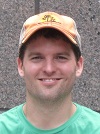 Joe Donohoe (DC Summer Session 2013) is a PhD student in Bioinformatics and member of the Science, Technology, and Public Policy program, University of Michigan.
Joe Donohoe (DC Summer Session 2013) is a PhD student in Bioinformatics and member of the Science, Technology, and Public Policy program, University of Michigan.
(Article reprinted with permission from Intersections, the newsletter from the Science, Technology, and Public Policy program at the University of Michigan, Fall 2013 issue.)
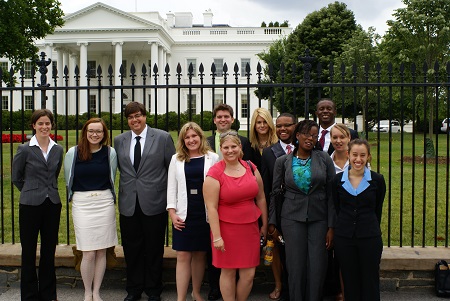
Feature Story from June 2013 issue
CSPO-ASU’s First HSDST PhD Graduate
May 2013 Commencement at Arizona State University: The first graduate from the PhD in Human and Social Dimensions of Science and Technology
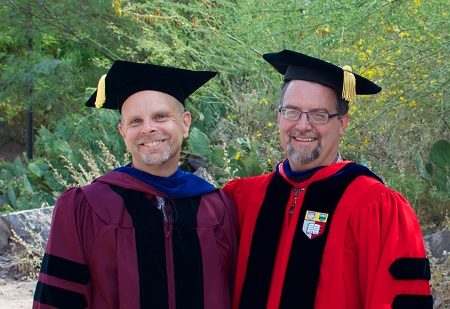
John Carter McKnight and Dr. Clark Miller (Dissertation Committee Chair)
Feature Story from February 2013 issue
Health Policy in Action
Natalie DeGraaf (2011 PSM in Science and Technology Policy, CSPO-AZ), has a rich background working within government, multinational, and non-profit sector. During the completion of a Prof. Science Masters degree in Science and Technology Policy at Arizona State University, Natalie gained appreciation for the larger socio-political influences that guide the direction of medical/health sciences in the US. She spent the summer of 2011 working at the White House Office of Science and Technology Policy in the Executive Office of the President.
Shifting to the nexus of policy and health science, particularly in health technologies and infectious diseases, Natalie commenced her MPH at New York University in 2011while working at Council for Responsible Genetics (CRG). She spent time in Port au Prince, Haiti conducting community needs assessments and collecting data on mobile technology availability and use within underserved communities. She served as a Global Health Diplomacy Assist. at the American Society for Microbiology in Washington DC; working to establish a workshop in Myanmar on evidence based policymaking and the importance of international diplomacy using science. She has also served as a Local Development Intern at the United Nations Development Program, Bureau for Development Policy within the Poverty Group.
Her most recent adventures include:
Global Health Diplomacy Consultant: While visiting Myanmar in December on behalf of the American Society for Microbiology (ASM), Natalie met with the nations Minister of Health to explore opportunities for ASM to work with Myanmar to engage young scientists in evidenced based policymaking workshops both in Myanmar and the United States in coming months. Building upon the international science community and leveraging networks, this work aims to promote a more informed system of policy decision making and allow for strengthened laboratory capacity through these policies, rendering a stronger public health system that is able to detect and eliminate microbial and infectious disease threats.
Global Public Health Volunteer: Natalie spent three weeks in Jitpur-Phedi, a small village outside Kathmandu, Nepal to research and work with the community to uncover the causes behind a recent spike in respiratory diseases amongst women. The work was solicited by Volunteers Initiative Nepal, a small non-profit that runs the local health post in the area and actively engages the community in health education.
Teacher: Two weeks during the end of December were spent working as a volunteer teacher at an English speaking elementary level winter camp in Yemi, a small town in South Korea.
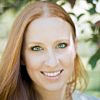
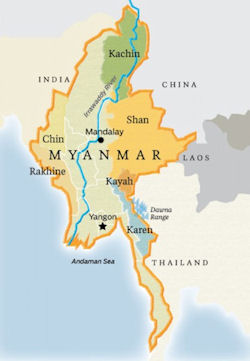
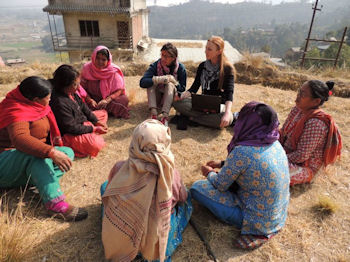
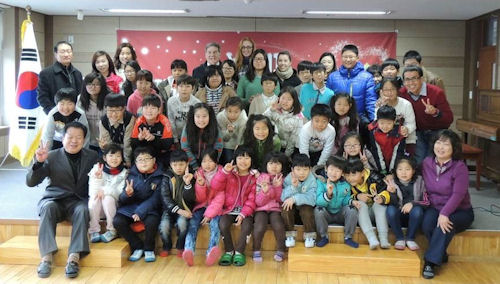
Feature Story from October 2012 issue
“Science Outside the Lab”
How research translates into action in the public sphere
by Allison Knaak (DC Summer Session 2012; PhD Student in the Center for Wave Phenomena, Department of Geophysics, Colorado Schools of Mines)
How is science incorporated into government? I attempted to answer this question as I attended a two-week immersion program called Science Outside the Lab, in Washington D.C. (or “the District” to locals). The program, set up by the Consortium for Science, Policy & Outcomes at Arizona State University, takes PhD students from around the country in various fields and introduces them to new ideas, skills, and information about mixing U.S. government and science.
The main part of the program is to learn from numerous government employees, including those from the EPA, GAO, CRS, NASA, USAID, DOE, and OSTP (I quickly realized that memorization of acronyms is necessary). I was pleasantly surprised to find that one of the speakers, Peter Folger, is an alumnus of Mines with a PhD in geological engineering. Folger now uses his technical science education to inform congressmen and their staffers about energy issues raised in congress as a Specialist in Energy and Natural Resources Policy in the Congressional Research Service. We also had the opportunity to hear from some NGOs, including the Ecological Society of America, a lobbyist, and a museum curator. These speakers addressed mainly how science and policy plays a role in their jobs and what skills are necessary to succeed in government.
One of the first topics we discussed was the federal budget – yes, it is as complicated as you think. But now I know what most agencies are doing at a specific time during the year and how it impacts funding for scientific programs. We also did many exercises to hone vital skills – how to communicate effectively, for one – to work in government. We practiced this skill by summarizing our PhD research in one sentence at an 8th grader’s level. I found this very difficult to do at first, but now when anyone (including a congressman) asks me what I do, I will have a simple, short, and easy-to-understand answer.
Another important skill I learned was how to write a brief – a one- or two-page document that includes all pertinent information on a given topic (economic, social, political impacts) and why this information is important (and, oh yeah, we only had two hours to complete it, which is all the time given for briefs in the OSTP).
The whole experience was valuable not only because I gained a greater understanding of how scientific information is used to make a policy decision, but more importantly, I had the opportunity to spend two weeks with 12 like-minded scientists who were all trying to answer how our research translates into action in the public sphere.
Allison works with Prof. Roel Snieder on applying synthetic aperture to controlled-source electromagnetic (CSEM) data. In Fall 2011, she authored a chapter titled, “Fractured Rock, Public Ruptures: The Debate over Hydraulic Fracturing and Gasland” for a forthcoming book, in collaboration with Prof. Jen Schneider in the Liberal Arts and International Studies (LAIS) Department at the Colorado School of Mines. Ali’s hobbies include road biking, hiking, playing disc golf, reading and volunteering at the local animal shelter. She loves working, playing, and living near the mountains of Colorado.
